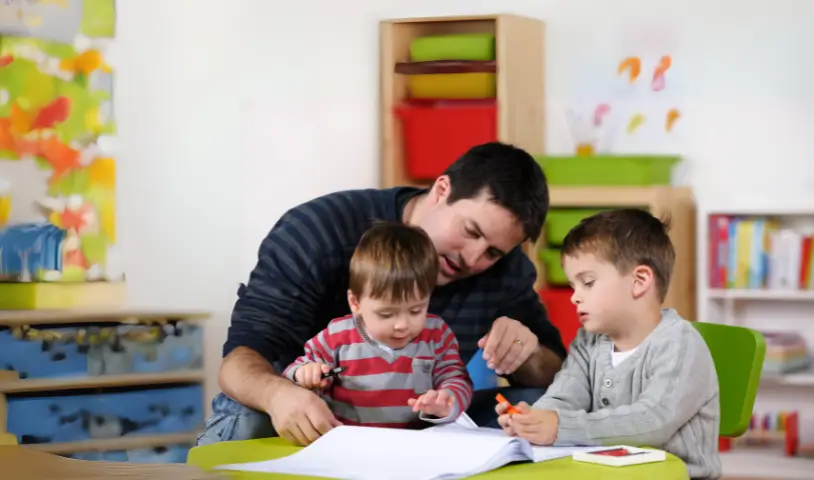Every child deserves the opportunity to grow, learn, and live a fulfilling life. For many children with developmental challenges, especially those on the autism spectrum, Applied Behavior Analysis (ABA) Therapy serves as a bridge toward understanding, communication, and independence. In recent years, many families have found hope and direction through specialized programs like beyond infinity aba, which focus on building positive behaviors and nurturing lifelong skills.
ABA Therapy isn’t just about changing behavior—it’s about guiding growth, celebrating progress, and creating brighter futures for children who see the world differently.
Understanding ABA Therapy
ABA Therapy stands for Applied Behavior Analysis, a science-based approach to improving behavior and learning. It focuses on how behavior works, how the environment affects it, and how learning happens. Therapists use positive reinforcement—rewarding good behavior—to help children build new skills and reduce challenging behaviors.
This structured method is widely used for children with autism but can also benefit those with communication or learning difficulties.
The Core Principle: Learning Through Positive Reinforcement
At the heart of ABA Therapy is positive reinforcement. When a child does something correctly—like saying a new word or sharing a toy—they are rewarded with something they enjoy, such as praise, playtime, or a small treat.
Over time, the child learns that positive actions lead to good outcomes. This simple idea encourages consistent growth and motivation.
Building Communication Skills
Many children in ABA Therapy struggle to express their needs or emotions. Therapists focus on helping them communicate, whether through words, signs, pictures, or technology.
Step by step, children learn to ask for what they need, understand others, and interact meaningfully with their peers and family members. Improved communication often leads to fewer frustrations and stronger relationships.
Developing Independence
One of the main goals of ABA Therapy is to teach children how to manage daily tasks independently. This may include brushing teeth, getting dressed, or following a simple routine.
Therapists break down each task into small, achievable steps. With practice and encouragement, children gain confidence and learn to complete these activities on their own. Independence is a key milestone in shaping a child’s brighter future.
Encouraging Social Interaction
Children with autism often find social situations challenging. ABA Therapy helps them understand how to play, share, and cooperate with others.
Through role-play, games, and guided activities, children practice real-life interactions. These social lessons help them feel more comfortable in classrooms, playgrounds, and family gatherings.
Addressing Challenging Behaviors
ABA therapists use data and observation to identify why certain behaviors occur. If a child engages in self-stimulatory or harmful actions, the therapist works to understand what triggers them.
For example, a behavior like rocking yourself to sleep might be a way for the child to self-soothe or calm down. Instead of discouraging it outright, ABA professionals teach alternative coping skills that provide the same comfort but are safer or more socially acceptable.
By replacing negative behaviors with positive ones, the child learns to navigate the world in a healthier way.
The Role of Family in ABA Therapy
Family involvement plays a vital role in ABA success. Parents are often trained to apply the same strategies used in therapy at home. This consistency helps children retain and apply what they’ve learned in different settings.
Families also provide emotional support, celebrate progress, and serve as advocates for their child’s ongoing growth. When families and therapists work as a team, the results are far more impactful.
Beyond the Therapy Room
ABA Therapy doesn’t just happen in clinics—it extends into everyday life. Skills learned in therapy are practiced at home, in school, and in the community.
For instance, a child who learns to greet others in therapy can use that skill to say hello to classmates. This generalization of learning ensures that progress continues outside structured sessions.
Celebrating Small Victories
Progress in ABA Therapy is often measured in small steps. A single new word, an independent task, or a calm response can represent major growth.
Therapists and parents celebrate these milestones together, creating a positive and encouraging environment that motivates the child to keep improving. Every small achievement leads to bigger successes over time.
Customizing the Therapy Plan
No two children are the same, and ABA Therapy recognizes that. Each therapy plan is customized to fit a child’s specific needs, strengths, and goals.
Therapists regularly assess progress and adjust strategies accordingly. This flexibility ensures that therapy remains effective and responsive to the child’s development.
The Science Behind ABA
ABA Therapy is grounded in decades of research and data analysis. It follows measurable goals and tracks progress scientifically.
Therapists collect data on how often behaviors occur, how quickly new skills are learned, and how well children maintain them. This evidence-based approach helps ensure that every child’s progress is real, measurable, and meaningful.
How ABA Therapy Builds Confidence
Confidence grows when children see their own progress. ABA Therapy helps children feel successful in small ways every day.
When a child learns a new word, solves a puzzle, or follows instructions independently, it builds self-esteem. Over time, these moments of success help children see themselves as capable learners.
Creating a Brighter Future
ABA Therapy isn’t just about short-term behavior changes—it’s about long-term growth. Children who receive early and consistent ABA support often develop stronger communication, social, and learning skills that carry into adulthood.
With patience, structure, and compassion, ABA Therapy lays the foundation for lifelong independence and happiness.
The Heart of ABA: Compassion and Understanding
Behind every ABA session is a team of professionals who care deeply. They don’t just teach—they listen, adapt, and encourage.
They see each child’s unique potential and help them uncover it step by step. The goal isn’t perfection—it’s progress, understanding, and joy in learning.
The Ripple Effect on Families and Communities
When a child thrives, their family and community benefit too. ABA Therapy gives parents hope, reduces daily stress, and strengthens family relationships.
Teachers also notice positive changes in classrooms as children become more focused and interactive. The entire community grows when inclusion and understanding become part of everyday life.
Conclusion
ABA Therapy shines as a light of hope for countless families. Through love, structure, and science, it helps children overcome challenges and discover their strengths.
Each session, each smile, and each step forward builds a path toward independence and joy.
The future becomes brighter, not just for one child—but for every life they touch.
In the journey of guiding growth, ABA Therapy truly shapes a world full of brighter possibilities.











